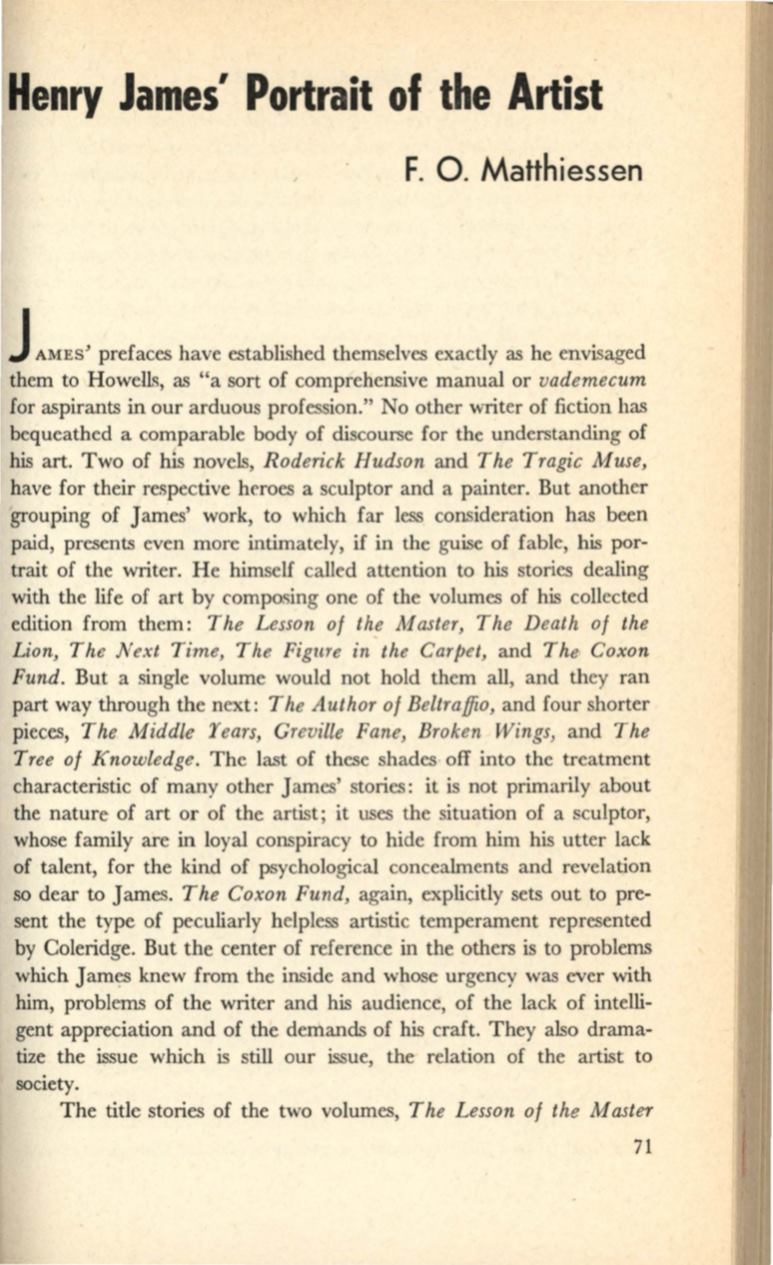
Henry James' Portrait of the Artist
F. 0 . Matthiessen
J AMES'
prefaces have established themselves exactly as he envisaged
them to Howells, as "a sort of comprehensive manual or
vademecum
for aspirants in our arduous profession." No other writer of fiction has
bequeathed a comparable body of discourse for the understanding of
his
art. Two of his novels,
Roderick Hudson
and
The Tragic Muse,
have for their respective heroes a sculptor and a painter. But another
grouping of James' work, to which far less consideration has been
paid, presents even more intimately, if in the guise of fable, his por–
trait of the writer. He himself called attention to his stories dealing
with the life of art by composing one of the volumes of his collected
edition from them :
The Lesson of
th~
Master, The Death of the
Lion, The Next Time, The Figure in the Carpet,
and
The Coxon
Fund.
But a single volume would not hold them all, and they ran
part way through the next:
The Author of Beltraffio,
and four shorter
pieces,
The Middle Tears, Greville Fane, Broken Wings,
and
The
T ree of Knowledge .
The last of these shades· off into the treatment
characteristic of many other James' stories: it is not primarily about
the nature of art or of the artist; it uses the situation of a sculptor,
whose family are in loyal conspiracy to hide from him his utter lack
of talent, for the kind of psychological concealments and revelation
so dear to J ames.
The Coxon Fund,
again, explicitly sets out to pre–
sent the type of peculiarly helpless artistic temperament represented
by Coleridge. But the center of reference
in
the others is to problems
which
Jam~
knew from the inside and whose urgency was ever with
him, problems of the writer and his audience, of the lack of intelli–
gent appreciation and of the demands of his craft. They also drama–
tize the issue which
is
still our issue, the relation of the artist to
society.
The title stories of the two volumes,
The Lesson of the Master
71


